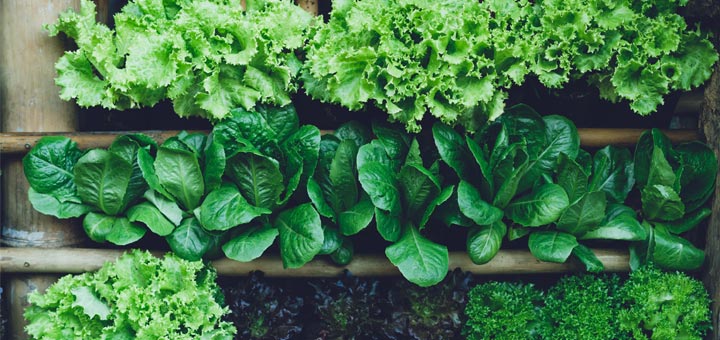Leafy greens are some of the best, most nutritious foods that you can eat. The sad reality is that most people fail to meet the recommended daily intake (RDI) of these powerful greens. Even though leafy greens are all the rage, people have eaten them since prehistoric times. In fact, North America got its first taste of leafy green vegetables when the first Africans arrived. They grew these vegetables and cooked them for their families, as they were staples in many traditional dishes.
Nutritional Information
Registered dietitians agree that leafy greens are some of the healthiest foods you can eat. In fact, the Centers for Disease Control and Prevention (CDC) conducted a study on nutrient density for nearly 50 fruits and vegetables. Roughly 17 of the top 20 on that list were leafy greens. Their nutritional profiles are diverse, offering an array of beneficial vitamins, minerals, antioxidants, and flavonoids. Some of the most common nutrients in leafy greens are:
- Folate
- Vitamins A, C, E, & K
- Fiber
- Sulforaphane
- Lutein
- Carotenoids
- Flavonoids
- Polyphenols
- And much more
What Are The Best Leafy Greens?
Health experts say that the darker the green, the healthier it is for you. The reason for this is because the deep green hue indicates a high antioxidant content. Additionally, they offer a high amount of folate, which is a necessary B vitamins that promotes heart health and reduces the risk of certain birth defects. Folate is necessary for cancer prevention and DNA repair. According to research studies, the top-rated leafy greens to consume include:
- Chard
- Watercress
- Kale
- Collard greens
- Spinach
- Dandelion greens
- Beet greens
- Bok Choy
- Microgreens
- Mustard greens
It’s one thing to know which leafy greens to eat, and it’s another thing to understand what they do for your health. To learn more about the health benefits of leafy greens, continue reading.
Reduced Risk Of Heart Disease
Statistical analysis suggests that the consumption of leafy green vegetables helps reduce the risk of cardiovascular diseases. Worldwide research indicates that not consuming enough leafy greens on a daily basis means that people don’t meet the RDI of certain nutrients. Dietary fiber, potassium, and antioxidants have been known to reduce the risk of heart disease. Turnip greens, spinach, and Swiss chard, for example, have anti-inflammatory compounds and potassium, which help maintain blood pressure. The vitamin K also supports healthy blood clotting and encourages optimal arterial health.
Weight Management
The most appealing benefit of leafy greens is the fact that they are low calorie, low carb, and have low glycemic indexes. For people looking to lose or maintain weight, these are three important boxes to check. By consuming more leafy greens to your diet, you dramatically increase fiber intake. Fiber works to regulate digestive function and encourages healthy and regular bowel movements. Leafy greens increase the nutritional density of your meals without increasing calories. Higher nutrient consumption is associated with reduced caloric intake, making leafy greens excellent weight loss foods.
Reduced Age-Related Cognitive Decline
There is a lot of research that proves that a higher consumption of leafy greens can slow cognitive decline. Age-related cognitive decline is a common cause of many conditions like Parkinson’s disease and Alzheimer’s disease. One study in the journal Neurology followed a group of 960 elderly people enrolled in the Rush Memory and Aging Project. Research focused on increasing the consumption of leafy greens and the protectiveness against cognitive decline. The results indicated that eating more leafy greens slowed cognitive decline. In fact, the results translated to the participants being 11 years younger, cognitively speaking.
High In Cancer-Fighting Compounds
Practically every single leafy green vegetable contains a combination of cancer-fighting compounds. Compounds like quercetin, beta-carotene, glucosinolates, and kaempferol work to protect cells from damage and exhibit anti-cancer properties. A report from the U.S. Department of Agriculture stated that two to three servings of leafy greens per week can lower the risk of breast, stomach, and skin cancers. Additionally, the folate in leafy greens works to encourage normal cell division and repair. This enhances the body’s defense against cancer development. For example, people who ate more folate experienced a lower risk of colon, lung, breast, and cervical cancers.
Healthier Vision
According to several studies, children who consume inadequate amounts of leafy greens have a higher risk of going blind. The reason for this is because of the insufficient carotenoid intake. Carotenoids, specifically lutein and zeaxanthin, exist in high concentration in the macular region of the retina and lenses in the eye. Leafy greens contain various carotenoids that help protect the eyes from oxidative damage and conditions like macular degeneration.

Vincent Stevens is the senior content writer at Dherbs. As a fitness and health and wellness enthusiast, he enjoys covering a variety of topics, including the latest health, fitness, beauty, and lifestyle trends. His goal is to inform people of different ways they can improve their overall health, which aligns with Dherbs’ core values. He received his bachelor’s degree in creative writing from the University of Redlands, graduating summa cum laude. He lives in Los Angeles, CA.






















